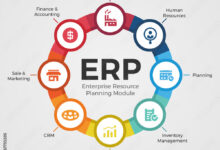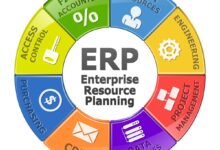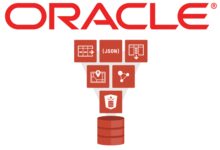SAP Business One Pricing: 7 Shocking Truths You Must Know
Thinking about upgrading your business management system? SAP Business One pricing might be more flexible than you think—but it’s also more complex than a simple price tag. Let’s break down what you really pay for.
SAP Business One Pricing: What You Need to Know First
When businesses explore ERP solutions, SAP Business One often stands out as a powerful, scalable option for small and mid-sized enterprises (SMEs). But before diving into features or implementation, the first question almost everyone asks is: How much does SAP Business One cost? The answer isn’t straightforward. Unlike off-the-shelf software with a fixed price, SAP Business One pricing is highly customizable—because the solution itself is.
Pricing depends on several variables: the number of users, deployment method (on-premise vs. cloud), required modules, industry-specific needs, and the level of support and training. This flexibility is a strength, but it can also make budgeting tricky without proper guidance. That’s why understanding the structure behind SAP Business One pricing is crucial before making any decisions.
Why SAP Business One Is Priced Differently Than Standard Software
Most software comes with a one-size-fits-all price. ERP systems like SAP Business One don’t. They’re designed to grow with your business, integrate with existing tools, and adapt to unique workflows. Because of this, SAP doesn’t publish a standard price list. Instead, pricing is determined through consultation with certified partners.
This model allows for tailored solutions but requires businesses to engage early with vendors to get accurate quotes. It also means two companies with similar sizes might pay very different amounts based on their needs. For example, a manufacturing firm needing advanced inventory and production modules will pay more than a service-based company using only financials and CRM.
Key Factors That Influence SAP Business One Pricing
Number of Users: Licensing is typically based on named users.More users = higher cost.Deployment Model: Cloud subscriptions have recurring fees; on-premise requires upfront investment.Modules and Add-Ons: Core financials are included, but advanced features like CRM, MRP, or e-commerce integration add cost.Industry-Specific Solutions: Verticals like retail, distribution, or manufacturing may require specialized configurations..
Implementation Services: Partner fees for setup, data migration, and training vary by complexity.”SAP Business One isn’t just software—it’s a business transformation tool.The price reflects the value it delivers over time.” — SAP Partner Network Representative
Understanding the Core Components of SAP Business One Pricing
To truly grasp SAP Business One pricing, you need to break it down into its core cost components.It’s not just about the software license—it’s a complete ecosystem of technology, services, and support.Let’s explore each piece..
Software Licensing Costs
The software license is the foundation of SAP Business One pricing. SAP offers two main licensing models: perpetual (on-premise) and subscription (cloud).
In the perpetual model, you pay a one-time fee for the software, plus an annual maintenance fee (typically 17-20% of the license cost). This gives you full ownership and control over the system. Ideal for companies that prefer capital expenditure (CapEx) and have in-house IT resources.
The subscription model (SAP Business One, Cloud Edition) operates on a monthly or annual fee per user. This includes software access, hosting, updates, and basic support. It’s perfect for businesses looking for operational expenditure (OpEx) and faster deployment. According to SAP’s official site, the cloud edition simplifies IT management and scales easily.
Implementation and Consulting Fees
Even the best ERP system won’t deliver value if it’s not implemented correctly. This is where certified SAP partners come in. Implementation costs can range from 50% to 100% of the software license cost, depending on complexity.
Services typically include:
- Project planning and scoping
- Data migration from legacy systems
- System configuration and customization
- Integration with third-party tools (e.g., e-commerce, payroll)
- User training and change management
For example, a company migrating from QuickBooks to SAP Business One will need extensive data mapping and workflow redesign, increasing implementation time and cost.
Maintenance, Support, and Upgrades
After go-live, ongoing support is essential. SAP offers SAP Support Portal access, regular updates, and technical assistance. For on-premise systems, the annual maintenance fee covers these services.
Cloud users don’t pay separately for maintenance—updates and backups are included in the subscription. However, premium support packages (e.g., 24/7 assistance, dedicated account managers) may cost extra.
It’s worth noting that staying current with updates ensures security, compliance, and access to new features. Neglecting support can lead to system vulnerabilities and operational inefficiencies.
On-Premise vs. Cloud: How Deployment Affects SAP Business One Pricing
One of the biggest decisions impacting SAP Business One pricing is deployment: on-premise or cloud. Each has financial, technical, and operational implications.
On-Premise SAP Business One: Upfront Investment, Long-Term Control
With on-premise deployment, the software runs on your company’s servers. You own the infrastructure and have full control over data, security, and customization.
Costs include:
- Software license (one-time)
- Server hardware or virtualization setup
- Database licensing (e.g., Microsoft SQL Server)
- IT staff or managed service provider for maintenance
- Annual maintenance fee to SAP
While the initial investment is high, long-term costs can be lower—especially if you already have server infrastructure. However, scalability is limited by hardware capacity, and upgrades require manual effort.
Cloud Deployment: Predictable Monthly Costs, Faster Setup
SAP Business One, Cloud Edition, hosted on AWS or Microsoft Azure, offers a subscription-based model. You pay per user per month, and everything is managed by the provider.
Benefits include:
- No upfront hardware costs
- Automatic updates and backups
- High availability and disaster recovery
- Easy scalability—add users or storage as needed
- Access from anywhere, on any device
According to a 2023 SAP insights report, cloud ERP adoption among SMEs grew by 38% year-over-year, driven by flexibility and reduced IT burden.
However, over time, cloud subscription costs can exceed on-premise expenses. Companies planning to use the system for 5+ years should compare total cost of ownership (TCO) carefully.
Breakdown of SAP Business One Pricing by User and Module
To give you a clearer picture, let’s look at typical pricing ranges. Note: These are estimates based on market research and partner quotes (as of 2024). Actual prices vary by region and partner.
Per-User Licensing Costs
SAP Business One uses named user licenses. There are different types:
- Professional User: Full access to all modules. Ideal for managers, accountants, and power users. Estimated cost: $3,000–$4,500 (perpetual) or $150–$200/month (cloud).
- Limited CRM User: Access to CRM and sales functions. Cost: ~$1,200 (perpetual) or $75/month (cloud).
- Viewer User: Read-only access to reports and dashboards. Cost: ~$500 (perpetual) or $30/month (cloud).
For a 10-user company with 5 Professional, 3 Limited CRM, and 2 Viewer users, the perpetual license could total $25,000–$30,000. The same setup on cloud would cost $1,200–$1,500 per month.
Module-Based Pricing and Add-Ons
The base SAP Business One package includes financials, sales, purchasing, inventory, and reporting. But many businesses need more.
Paid add-ons and modules include:
- Manufacturing (MRP, BOM, Production Orders): $5,000–$15,000 one-time or $200–$500/month
- Advanced CRM (Marketing Automation, Service Management): $3,000–$8,000 or $100–$300/month
- Project Management: $2,500–$6,000 or $80–$200/month
- Advanced Analytics & BI: $4,000–$10,000 or $150–$400/month
- Industry-Specific Solutions (e.g., Retail, Distribution): Custom pricing based on needs
Integration with third-party platforms like Shopify, Magento, or Salesforce may also incur additional development or connector fees.
“The real value of SAP Business One isn’t in the software—it’s in how it connects your entire business. The pricing reflects that depth.” — ERP Consultant, Panorama Consulting
Hidden Costs in SAP Business One Pricing You Shouldn’t Ignore
While the headline prices get attention, the hidden costs often catch businesses off guard. These aren’t necessarily “bad” expenses—they’re necessary investments for success.
Data Migration and System Integration
Moving data from old systems (Excel, QuickBooks, legacy ERPs) into SAP Business One requires cleaning, mapping, and validation. Poor data quality leads to inaccurate reports and operational errors.
Costs depend on data volume and complexity. A simple migration might cost $2,000–$5,000. A complex one with multiple sources and historical data can exceed $15,000.
Integration with existing tools—like payroll systems, e-commerce platforms, or CRM—is another cost driver. APIs and middleware solutions (e.g., Zapier, Dell Boomi) may be needed, adding $3,000–$10,000 to the project.
Training and Change Management
Even the most powerful ERP fails if users don’t adopt it. Training is not optional—it’s critical.
Training costs include:
sap business one pricing – Sap business one pricing menjadi aspek penting yang dibahas di sini.
- Onsite or virtual sessions for different user groups
- Custom training materials and videos
- Ongoing support during the first 3–6 months
Expect to spend $1,000–$3,000 per company (not per user) for comprehensive training. Larger organizations may need dedicated change management consultants to drive adoption.
Customization and Ongoing Development
While SAP Business One is highly configurable, some businesses need custom fields, reports, or workflows. These are built using the SAP Business One SDK (Software Development Kit).
Custom development can range from $2,000 for minor tweaks to $20,000+ for complex automations. It’s important to balance customization with future upgradeability—too much can make updates difficult.
How to Get an Accurate SAP Business One Pricing Quote
Since SAP doesn’t sell directly to most SMEs, you’ll work with a certified partner. Choosing the right one is half the battle.
Choosing the Right SAP Partner
Not all partners are equal. Look for:
- SAP-certified status
- Experience in your industry
- Positive client reviews and case studies
- Transparent pricing models
- Post-implementation support offerings
You can find authorized partners through the SAP Partner Finder tool. Compare at least 2–3 quotes to ensure fairness.
Questions to Ask Before Getting a Quote
To get a meaningful quote, provide detailed information about your business. Ask your partner:
- What’s included in the implementation fee?
- Are data migration and training bundled or extra?
- What’s the estimated timeline?
- Can you provide references from similar clients?
- What’s the process for upgrades and support?
The more transparent the conversation, the more accurate the SAP Business One pricing estimate will be.
Real-World SAP Business One Pricing Examples by Industry
Let’s look at three real-world scenarios to illustrate how SAP Business One pricing varies by business type.
Example 1: Wholesale Distribution Company (20 Users)
Needs: Inventory management, sales order processing, financials, basic CRM.
Deployment: Cloud Edition
Cost Breakdown:
- 15 Professional Users: 15 × $180 = $2,700/month
- 5 Limited CRM Users: 5 × $75 = $375/month
- Implementation: $25,000 (one-time)
- Training: $2,500
- Total First-Year Cost: ~$60,000
Example 2: Manufacturing Firm (15 Users)
Needs: Financials, production planning, BOM management, quality control.
Deployment: On-Premise
Cost Breakdown:
- Software License: $45,000
- Manufacturing Module: $12,000
- Server & Database: $8,000
- Implementation: $40,000
- Annual Maintenance: $9,000 (20% of license)
- Total First-Year Cost: ~$114,000
Example 3: Professional Services Firm (10 Users)
Needs: Project accounting, time tracking, financials, reporting.
Deployment: Cloud
Cost Breakdown:
- 8 Professional Users: 8 × $180 = $1,440/month
- 2 Viewer Users: 2 × $30 = $60/month
- Project Management Module: $200/month
- Implementation: $15,000
- Training: $1,500
- Total First-Year Cost: ~$35,000
“We saved 200 hours a month in reporting after switching to SAP Business One. The ROI was clear within 14 months.” — CFO, Mid-Sized Manufacturing Company
Is SAP Business One Worth the Investment?
At first glance, SAP Business One pricing may seem high—especially compared to basic accounting software. But the real question isn’t “How much does it cost?” It’s “What’s the return on investment?”
Measuring ROI: Time Savings, Accuracy, and Growth
Companies report significant gains after implementation:
- 30–50% reduction in manual data entry
- 25% faster month-end closing
- Improved inventory accuracy (up to 95%)
- Better cash flow visibility and forecasting
- Scalability to support 2x–3x business growth
For a $5M revenue company, even a 10% efficiency gain can translate to $500,000 in annual savings or growth opportunities.
Long-Term Value vs. Short-Term Cost
Yes, SAP Business One requires investment. But unlike point solutions that need replacing in 3–5 years, SAP Business One is built to last. With regular updates and support, it can serve a growing company for a decade or more.
Moreover, the integration of finance, sales, inventory, and operations on a single platform eliminates data silos, reduces errors, and empowers better decision-making.
If your business is outgrowing QuickBooks, Excel, or disjointed systems, SAP Business One isn’t an expense—it’s a strategic upgrade.
How much does SAP Business One cost?
SAP Business One pricing varies widely based on deployment, users, modules, and services. On-premise setups can cost $20,000–$100,000+ upfront, while cloud subscriptions range from $1,000–$5,000/month. Implementation and training add significant one-time costs.
Is SAP Business One cloud expensive?
Cloud pricing is predictable and includes hosting, updates, and support. While monthly fees add up over time, the cloud reduces IT overhead and scales easily. For many SMEs, it’s a cost-effective choice.
What’s included in SAP Business One pricing?
Base pricing includes core financials, sales, purchasing, and inventory. Additional costs apply for users, modules (e.g., manufacturing, CRM), implementation, training, and support. Cloud pricing bundles software, hosting, and updates.
Can I customize SAP Business One?
Yes, SAP Business One supports customization via SDK, add-ons, and partner-developed solutions. However, extensive customizations may increase costs and complicate future upgrades.
How long does SAP Business One implementation take?
Typical implementation takes 3–6 months, depending on complexity. Simple setups can go live in 6–8 weeks; complex migrations with customizations may take 9–12 months.
Understanding SAP Business One pricing isn’t just about numbers—it’s about value. Whether you choose on-premise or cloud, the system’s ability to streamline operations, improve accuracy, and support growth makes it a powerful investment. By evaluating your needs, comparing deployment options, and working with the right partner, you can make an informed decision that pays off for years to come.
sap business one pricing – Sap business one pricing menjadi aspek penting yang dibahas di sini.
Further Reading:







